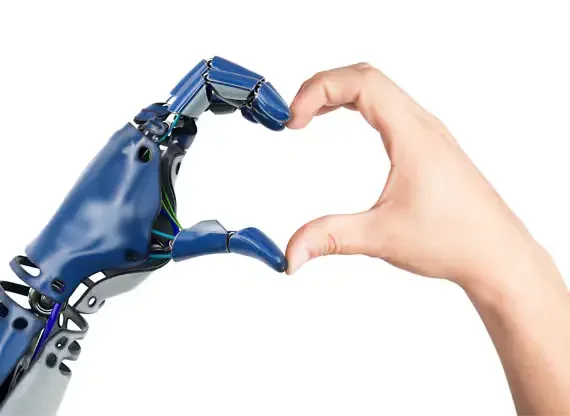
April 7, 2020
Em-pa-thy | noun | The ability to share and understand the feelings of another.
Empathy is perhaps the biggest gap between humans and technology. In healthcare circles we fear that the rise of machines, AI, and robotics will also lead to the demise of bedside manner. Which, if true, would indeed be a great failing. Humans, on a very primal level, require connection with and amongst each other. It’s no surprise that solitude, particularly forced solitude, results in negative displays of psychological and psychosocial behaviors. We see acute examples of this in prisons, for example. Humans need other humans. We need to look each other in the eyes, to hold each other by the hand.
Tech-nol-o-gy | noun | The application of scientific knowledge for practical purposes, especially in industry.
Up until quite recently technology has primarily served to give insights into our physical selves, largely fueled by the Quantified Self movement, itself fueled by the advent of the smartphone. Step tracking led to activity tracking led to sleep, then heart rate tracking among other biometrics for the first time made available right on your phone. We see this tech-enabled transparency lowering barriers to other types of information too, such as patient records available online. The tech sector goes on to penetrate almost every segment of our lives, from controlling the temperature in our home from an app or even how one drives a car (or doesn’t, as the case may be). Since the technology train has long since left the station, where do we find balance between technological integration that enhances our lives and genuine human connection?
Answer: with Empathetic Technology. The next frontier will undoubtedly be about how technology can not only tap into our emotional selves, but also anticipate our needs in support of our biological and environmental wellbeing. Often decked in features like voice and facial expression recognition, the capabilities of these platforms are only becoming increasingly personal.
Worried that the machines are taking over? You’re not alone. As of 2017, over 70% of Americans feared the takeover of machines, citing robotic decision making as their greatest concern. For many experts though the benefits outweigh the concerns. Poppy Crum, Chief Scientist at Dolby Laboratories, takes the view that internal, emotional experiences can be measured - and especially effective if measured longitudinally over many years - to generate physiological data, which in turn can go on to inform our environments. Functioning as a feedback loop, external technology can then “respond and anticipate custom internal experiences and feelings” and, she posits, can even result in “greater autonomy and freedom.”
If ever the adage, ‘with great power comes great responsibility,’ were to apply, it would be now. As Susan Lahey puts it, “our technology is only as empathetic as we are.” So, the responsibility in front of us is of both a personal and societal nature. As barriers are broken and social constructs come crashing down, Empathetic Technology is queued up to evolve into Empathetic Intelligence, or EI. Coming to a home near you, Empathetic Intelligence might just become the defining technology of 2020.
At Bayer G4A we are seeking technologies for precisely these types of future-facing opportunities. This year we are looking for the right group of Partners to join us in tackling some of health care’s most pressing challenges. Find out how you can become a partner at G4A.health.